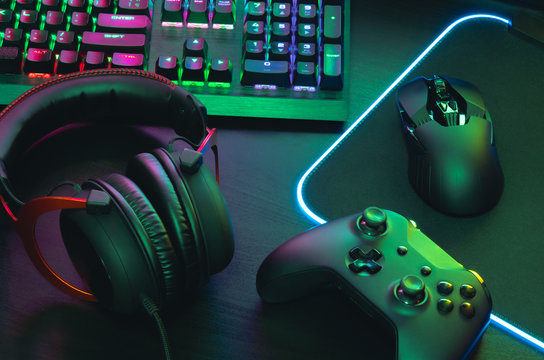When building a gaming or productivity PC, achieving balanced performance between your CPU and GPU is critical. One common issue many users face is a bottleneck, where one component limits the potential of the other. That’s where a Bottleneck Calculator comes into play. This tool helps you test and analyze your hardware configuration before or after you build your PC.
In this article, we’ll explore how bottleneck calculators work, why they’re important, and how to use them effectively to ensure your PC delivers the performance you expect.
What Is a Bottleneck in a PC?
A bottleneck occurs when one component of your PC (usually the CPU or GPU) is significantly weaker than the other, causing performance loss. For example:
- A powerful GPU paired with an entry-level CPU may result in poor frame rates because the CPU can’t feed enough data to the GPU.
- A high-end CPU with a weak GPU can also result in sub-par graphics performance, especially in gaming.
This mismatch can lead to frame drops, lag, or underutilized hardware, which wastes your money and hurts your experience.
What Does a Bottleneck Calculator Do?
A Bottleneck Calculator analyzes your CPU and GPU combination to estimate if there will be a bottleneck, and which component is causing it. It uses benchmark data, compatibility checks, and system specs to:
- Show percentage of bottleneck (e.g., “Your CPU may bottleneck your GPU by 20%”).
- Suggest better hardware combinations.
- Help optimize PC builds before purchase.
- Provide real-time performance estimates for gaming or productivity tasks.
Whether you’re a beginner or an experienced PC builder, this tool is incredibly useful to avoid mismatches and build a balanced setup.
How to Use a Bottleneck Calculator (Step-by-Step Guide)
A bottleneck calculator is a powerful tool that helps you identify performance mismatches between your PC components, especially the CPU and GPU. Whether you’re building a new gaming PC or upgrading an existing one, using this tool can save you time, money, and performance issues.
Here is a step-by-step guide to using a bottleneck calculator effectively:
Step 1: Visit a Reliable Bottleneck Calculator Website
Start by visiting a trusted website such as https://pcbottleneckcalculator.net/.
This site provides an easy-to-use interface that analyzes your CPU and GPU combination and gives you a bottleneck percentage based on real-world data.
Step 2: Choose Your CPU and GPU
Once you land on the website:
- Use the dropdown menus to select your CPU (processor) and GPU (graphics card) from the list.
- Be as specific as possible—choosing the exact model of your CPU and GPU will ensure accurate results.
For example, select combinations like Intel Core i5-12400 and NVIDIA GeForce RTX 3060 Ti to analyze how well they perform together.
Step 3: Enter Additional Details (Optional but Recommended)
To get a more accurate and customized result, you can also fill in:
- RAM size: The total amount of system memory installed (e.g., 8GB, 16GB, 32GB).
- Screen resolution: Your monitor’s resolution (e.g., 1080p, 1440p, or 4K).
- Usage type: Select how you plan to use your PC, such as:
- Gaming
- Video editing
- Streaming
- General productivity
These inputs help the calculator estimate your PC’s performance based on your specific use case.
Step 4: Click the “Calculate” Button
After entering all the necessary information, click on the “Calculate” button.
The calculator will process your input and generate a detailed bottleneck analysis in a few seconds.
Step 5: Read and Understand the Results
The results will typically include the following:
- Bottleneck percentage: A numerical value showing how much one component is limiting the other (e.g., “Your CPU may bottleneck your GPU by 12%”).
- Limiting component: Indicates whether the CPU or GPU is causing the performance drop.
- Suggestions for balance: Some calculators provide recommendations for better-matched hardware to reduce the bottleneck.
- Estimated performance: In some cases, you’ll also get performance estimates for different games or workloads based on your current configuration.
Step 6: Take Action Based on the Results
If your system shows a high bottleneck percentage (usually above 15–20%), consider:
- Upgrading the weaker component (CPU or GPU).
- Lowering your resolution or in-game settings.
- Ensuring background tasks are minimized during heavy use.
If your results show a balanced system (below 10% bottleneck), you can proceed confidently knowing your build is optimized.
Why Bottleneck Calculators Matter for Gamers
Gamers are most affected by bottlenecks because even small performance drops can ruin the experience. Here’s how a gaming bottleneck calculator can help:
- Ensure consistent FPS (frames per second) without stutter.
- Choose the right GPU for your processor.
- Avoid overpaying for a high-end GPU that your CPU can’t support.
- Achieve smooth 1080p, 1440p, or 4K gaming based on system capability.
For competitive players, this optimization is not optional—it’s a must.
CPU vs GPU Bottleneck: Which One Is Worse?
Both CPU and GPU bottlenecks are problematic, but they affect your PC differently:
- A CPU bottleneck impacts multitasking, AI processing, and overall system responsiveness.
- A GPU bottleneck affects graphics rendering, frame rates, and visual quality.
Using a CPU GPU bottleneck calculator ensures that neither of these becomes the weak point. Aim for a configuration where both run at near 100% utilization during intensive tasks.
Tips to Reduce Bottlenecks
If you’re already facing bottleneck issues, here are a few tips:
- Upgrade the weaker component (CPU or GPU).
- Lower in-game resolution or settings to reduce strain.
- Close background applications while gaming.
- Consider overclocking (if supported and safe).
- Add more RAM for smoother multitasking.
Features to Look for in a Bottleneck Calculator
Not all calculators are equal. A reliable bottleneck test tool should offer:
- Support for latest CPUs and GPUs (Intel, AMD, NVIDIA).
- Game-specific performance estimates.
- Real-world benchmark integration.
- Easy-to-understand results.
- Mobile-friendly interface.
One such tool is available at https://pcbottleneckcalculator.net/ offering detailed insights based on your configuration.
Final Thoughts
A bottleneck calculator is an essential tool for building or upgrading your PC. It ensures that your components work in harmony, helping you get the best value and top-tier performance without overspending. Whether you’re a gamer, content creator, or casual user, checking for bottlenecks before buying hardware is a smart move.
By using a reliable PC bottleneck checker, you can build a system that performs flawlessly—and avoid the frustration of mismatched parts.



































